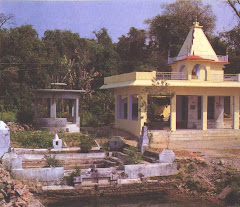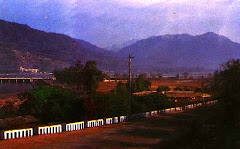The district has 14 police stations and covers an area of about 340447 Hectares, Geographically, the district can be divided into two parts viz. (i) Hilly area and (ii) Plain area. The hilly area comprises of Kaimur plateau. The plain area on the western side is flanked by the rivers The Karmanasha and the Durgawati. The Kudra river lies on it eastern side. The district of Buxar of Bihar State and the district of Ghazipur of U.P. State bound it on the North. On the south is the district of Garhwa of Jharkhand State and on the West is the district of Chandauli and Mirjapur of the U.P. State. On the East is district of Rohtas of Bihar State. The district has close linkage with the history of Shahabad, which was its parent district also. The old district of Shahabad had four subdivisions of which Bhabua was one. The present district of Kaimur has been formed from the whole of this Bhabua subdivision.
 Bhabua Railway and roadways Map
Bhabua Railway and roadways Map

![This temple is in Village[Kasher] in Distric KaimurBhabua](http://4.bp.blogspot.com/_oVNRu0osBD0/SMwPRg8LDXI/AAAAAAAAADo/BAtCX9f5qOA/S240/santladevi%5B1%5D.jpg)

